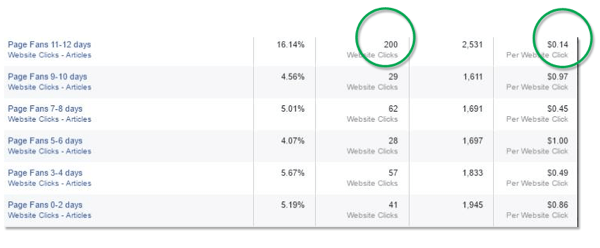
Wondering where all that money is going? Your reports are telling you that you are spending a little too much on your Facebook ads? Don’t worry there is a remedy for everything, worry not dear friends.
Social Media Examiner has a few pointers on how you can manage your finances while you get the best out of this Facebook feature.
#1: Write Five Focused Blog Posts
The first step is to focus on what’s meaningful and important to your target audienceso you can identify with their struggles, hopes, dreams, and fears.
Then write five blog posts addressing these issues. Make sure your articles zero in on a need people have right before they look for a product or service like yours. Research each topic so each post is supremely useful, and imagine how you want your prospective buyer to feel after reading it.
Make your posts practical. You might create a cheat sheet or checklist, or share easy-to-understand instructional posts.
Here’s an example:
Jen, a fitness coach who works with women after childbirth, isn’t sure whether the women she works with are more motivated by how they look or how they feel. She wants to write some blog posts that address both aspects to see which resonates more with her audience. She concludes that women in her target audience have the following aspirations:
- To bounce back to their pre-pregnancy weight
- To feel less overwhelmed
- To have more energy and feel like they’re on top of this mom thing
- To feel attractive and desirable
- To sleep better and feel more able to cope

Write five blog posts that will captivate the interests of your target audience. Image: Shutterstock.
She also identifies the following factors that keep her audience awake at night:
- Their babies
- Worries about the future
- Their relationships with their partners
- Money, now that they’re down to one income
- Feeling overwhelmed and inadequate
Jen decides to write blog posts on the following topics:
- How to get more sleep as a new mom
- How to love your post-baby body, no matter what size jeans you wear
- Am I coping? The question every new mom asks
- When you feel like you’re hanging on by a thread as a new mom
- How to find your post-baby mojo for better health, energy, and sleep
#2: Identify Your Hero Blog Post
Most blogs usually include one post that attracts more likes, comments, and Google hits than any other. This post is your hero post. It’s your secret weapon for reducing your ad spend because it’s the one that draws the most eyeballs to your website.

Use analytics to identify which of your five posts is the most successful. Image: Shutterstock.
The more successful the blog post, the better your ads will perform and the more targeted visitors you’ll attract to your website.
To identify your hero post, you’ll want to set up an ad campaign to advertise each of the five blog posts separately. Make sure you’ve set up your Facebook website ad pixelbefore you activate your campaign and create conversion pixels for each of your five blog posts.
For each ad include an inviting description of the blog post, a stunning image or video, and a link back to your website. Check that your headlines are compelling, shorter than 70 characters, and relevant to your content. Make sure that your images or videos are enticing and relevant to the content.
- Your current email list subscribers
- People who’ve liked your Facebook page
- Your current website custom audience if you already have a pixel in place. (If you don’t, there’s a WordPress plugin called the AdChief plugin, which makes it easy for you to install one.)
Note: If you’re just starting out and have only just placed your ad pixel on your website, you can focus your initial campaign on your Facebook page fans and email list to start with. You’ll build your website custom audience as you drive traffic to your website through your blog post ads.
This testing stage takes 2 days per blog post; that’s 10 days for 5 blogs. At the end of the 10 days, look at your Facebook ad stats to see the click-through rate and the cost per click for each post.
Your hero post is the one that has the highest click-through rate and the lowest cost per click.

Notice how the first blog post was much more successful at driving people to the website with 200 click-throughs? Also notice the price per click is a lot lower than the other blog posts? It would make sense, then, to use that blog post as the hero post.
#3: Advertise Your Hero Blog Post to a Lookalike Audience
Since you’ve just determined which content is most popular with your current audience, Facebook can use that information to identify other users who are likely to be interested in your business.
As you create your lookalike audience, set your audience profile to be within 1% of people who visited your hero blog post so you’re not wasting money advertising to people who aren’t interested in your product or service. This can dramatically lower your cost per click for cold prospects.
